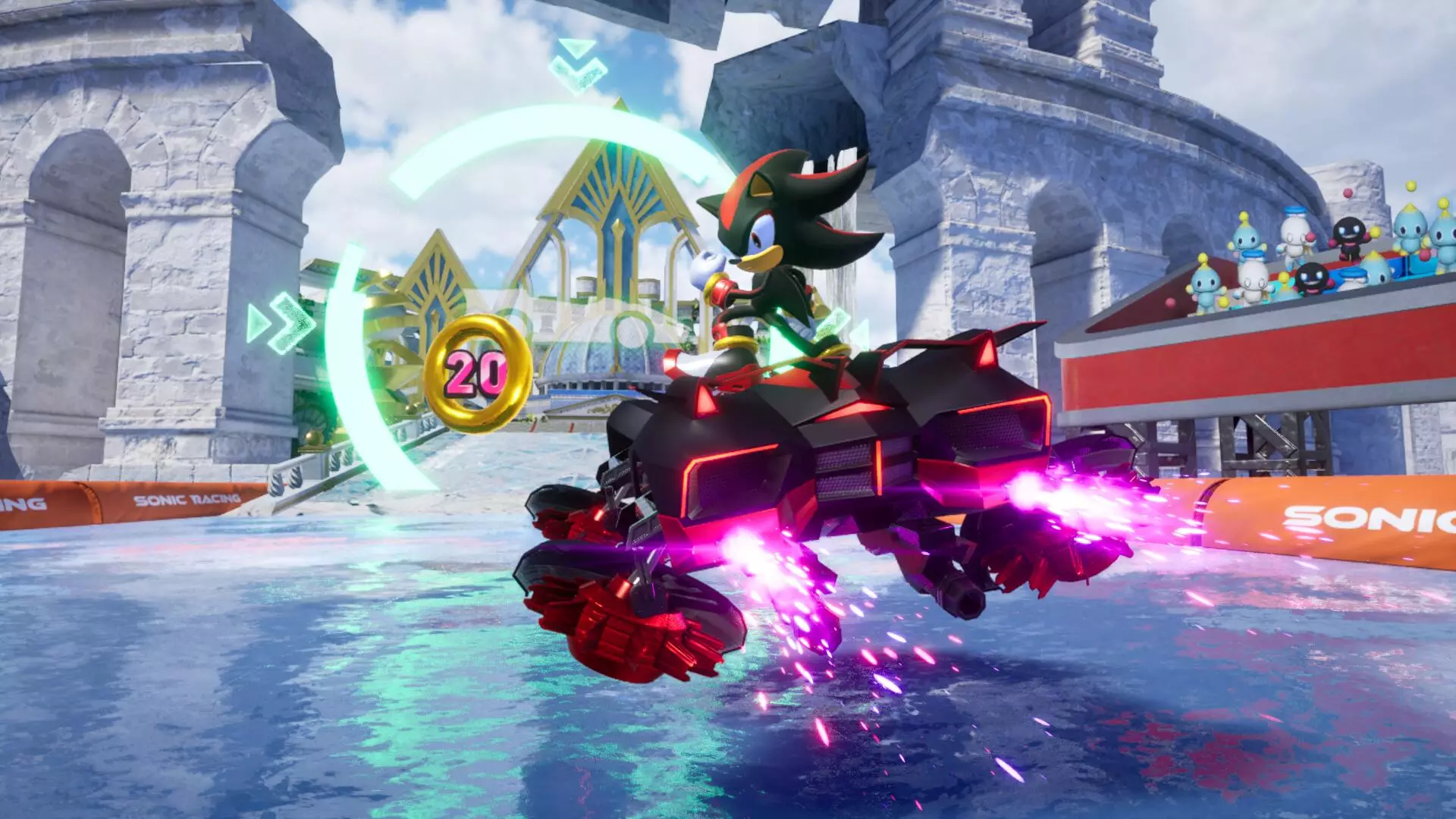Sonic Racing: CrossWorlds is making ripples in the gaming community not just for its exhilarating speed and nostalgic characters but for a refreshing philosophy rooted in fairness and competition. Traditionally, kart racing games like Mario Kart thrive on chaotic item play that can swing races from one extreme to another. However, Takashi Iizuka, a veteran producer closely tied to the Sonic franchise, reveals that the development team took a radically different approach. By starting from scratch and focusing solely on the racing mechanics without the interference of items, they aimed to create a fair playing field where skill and strategy reign supreme.
This decision reflects a growing trend in game design, where developers challenge the status quo to enhance player experience. Iizuka emphasizes this intent to craft an experience that is both enjoyable and competitive. The team’s systematic removal of items — initially designed to create frantic gameplay — allows them to focus on refining vehicle and track design. It’s a bold move that speaks volumes to the evolving nature of racing games, challenging how thematically chaotic experiences can be crafted without relying heavily on unpredictable elements.
Playtesting: The Secret Sauce to Balance
Another noteworthy aspect of development for Sonic Racing: CrossWorlds was the rigorous playtesting process. While playtesting is common in game development, the depth and intent behind these sessions in this case stood out. Iizuka shared that the goal was to eliminate any elements that could frustrate players or disrupt the core racing mechanics. If there was any item or feature that consistently favored the less-skilled players, it was promptly reconsidered. This relentless focus on balance minimized instances of players feeling marginalized, enabling every racer to compete fairly and strategically right up to the finish line.
This meticulous approach contrasts dramatically with the thrill-driven chaos of other racing titles. It suggests a deep understanding of kinesthetic joy in racing mechanics, allowing players to harness their skills effectively. The community-driven aspect of playtesting also reflects a recognition that the best insights often come from those who will ultimately engage with the game, leading to a more refined and satisfying product.
The Result: A New Standard in Competitive Racing
The outcome of this development philosophy is a racing experience that feels vibrant, engaging, and refreshingly fair. Iizuka refers to the final iteration of Sonic Racing: CrossWorlds as having the “right amount of chaotic.” This term captures the spirit of exhilarating competition without the anxiety-inducing unpredictability often seen in other kart racing games. By choosing to emphasize skill and design over random item drops, Sonic Racing not only carves out its niche but sets a new standard for what competitive racing can and should be.
With Sonic and his crew behind the wheel, the game crafts a unique atmosphere that encourages repeat playthroughs, where gamers can hone their skills and craft their strategies rather than relying on luck to secure a victory. This dedication to fairness and fun in a competitive setting is not just commendable; it’s revolutionary, striking a daring balance that gaming enthusiasts have long sought. In a world full of chaotic racers, Sonic Racing: CrossWorlds dares to be different by delivering a robust and balanced racing experience that promises enduring entertainment and excitement.

